Bamana people, Ciwarakun (Chi-wara) or Sogonikun (Sogoni-kun), Headdress Sculpture, Sikasso Region (?), Mali
Pagina 1 di 1
 Bamana people, Ciwarakun (Chi-wara) or Sogonikun (Sogoni-kun), Headdress Sculpture, Sikasso Region (?), Mali
Bamana people, Ciwarakun (Chi-wara) or Sogonikun (Sogoni-kun), Headdress Sculpture, Sikasso Region (?), Mali
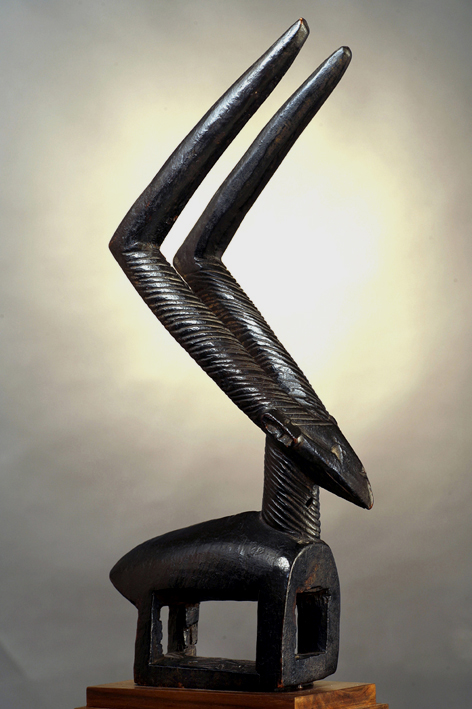
Bamana people, Ciwarakun (Chi-wara) or Sogonikun (Sogoni-kun), Headdress Sculpture, Sikasso Region (?), Mali
Materials: wood, pigment
H. 15,9 in./ cm 40,5
Last quarter 19th century
Private collection Italy
Photo Courtesy Pietro Paletti and Onda Predali
Arti delle Mani Nere All Rights Reserved
Provenance
-Harrie Heinemans coll. Eindhoven
-May Weber Foundation. Chicago
-Pierre Loos coll. Bruxelles
-Bernard Dulon coll. Paris
-Dalton-Somaré Gallery Milano
Exhibition
-Afrika Museum, Berg en Dal, 1986
-Parcours des Mondes, Paris, 2002
-Sculture Africane in collezioni private italiane, Gall. Dalton-Somaré, Milano, 2004
-L’Africa delle Meraviglie. Arti Africane nelle collezioni italiane. Museo Palazzo Ducale, Genova, 31th December 2010 – 5th June 2011
-Africa. La terra degli spiriti. Museo delle Culture (Mudec), Milano, 27 marzo/ 30 agosto 2015
Published
-African art. The May Weber Foundation. Catalog #1, Chicago,1983, pag.71, b/n.
-Afrika Museum, Berg en Dal, 1986, pag. 36
-The pleasure of collecting African art – The Harrie Heinemans Collection, Eindhoven, 1986, # 56
-Primitive Kunst, Archeologie, Bernaerts, Antwerp, 15/XII/1999, Lot. 1257, color
-Tribal Le magazine de l’art tribal, # 1, Bruxelles, 2002, pag. 34
-Vittorio Carini, A Hidden Heritage – Sculture africane in collezioni private italiane, Milano, 2004, # 30
-Ivan Bargna, L’arte in Africa, Jaca Book, Milano, 2008, pag.24, #1 color
-Bargna I, e Parodi da Passano G., L'Africa delle meraviglia - Arti africane nelle collezioni italiane, Genova,2010, Silvana Editoriale, Cinisello Balsamo (MI), pag. 51, color
-AA.VV, Africa. Terra degli spiriti, a cura di Gigi Pezzoli e Claudia Zevi, 2015, Milano, 24 Ore Cultura ed. pag. 308, color
“This antelope head was formerly attached to a basketry heat.
It is knows as a Chi-wara (often also spelled Tyi-wara),which literally translated means “ farming beast”.
The sculptures were sometimes also called Sogoni-kun, or “little animal head.” This headdress sculpture is highly abstract.
A similar tipology of Chi-wara is in the Musée du Quai Branly (Inv. no. 73.1964.14.9). A more exact identification of the style area of origin is not however indicated.
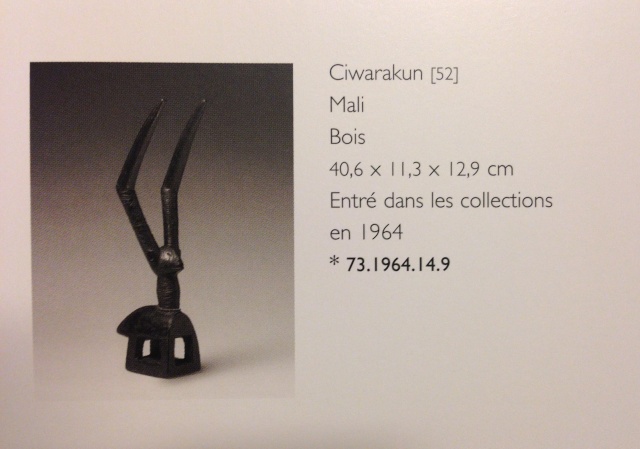
Courtesy Musée du Quai Branly
The antelope headdress was worn in performances that emphasized the importance of agriculture to the Bamana. The word “Chi-wara” has multiple meanings. It can refer to the cult of agricultural fertility in general, it can designate the mythical creature that brought farming to the Bamana, or a specific successful farmer or a particular farming tool, or it can mean the secular dance performances, songs, and costumes that even nowadays occur in celebration of a good harvest.
Just as the Chi-wara does, the Sogoni-kun also appears at agricultural festivals, albeit the Bamana borrowed the latter from their Wasulunke neighbours in southwest Mali.
The antelope headdresses were made by blacksmiths. Among the Bamana, they are generally also carvers. A characteristic of Bamana artistic and cultural life, which is also present among the Dogon, Malinke, Senufo, Tuareg, and other groups in the geographic zone knows as Sahel/Savanna, is the existence of artist “cell.”
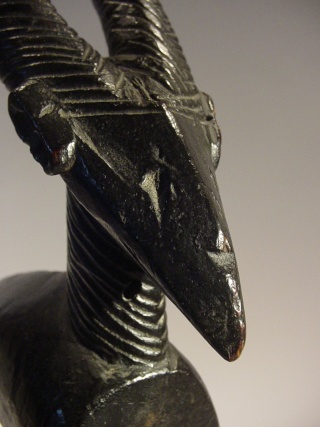
Most Bamana artists belong to a recognized distinct class of peoples known collectively as Nyamakalaw. They do not intermarry whit Horon, the majority of the population, comprised largely of farmers and traders. As Barbara Frank writes, it is not uncommon for these artists to suggest that they are of an entirely different ethnic origin, that their ancestor existed before the Bamana, and that they were smelting iron, carving wood, and making pots before the Bamana could hunt, farm, or cook. In fact, the development of craft specialization among the Bamana was a complex process that entailed the concentration of ritual authority and technical expertise within certain clans, awarding them exclusive rights to particular domains.
This history also includes interactions – some peaceful, some violent¬- among a wide range of peoples across the region. Bamana society is today, and has long been a heterogeneous one (Frank 2001,p.45).
The Chi-wara and the Sogoni-kun produced by the Nyamakalaw communicate important local aesthetic ideas. The elegant simplicity is expressed by the term Jayan, which has connotations signifying both abstraction and reduction, alludes to the “search for the real meaning of things” ( McNaughton 1988, pp.107-109).
Other terms which express aesthetic notions include Nyènyèn (design) and Jago (added decoration).
These concepts have also proven to be very attractive to Western observers and art aficionados. André Derain and Fernand Léger were among the early collectors of Chi-wara.” (Bettina von Lintig, 2011, p.202)
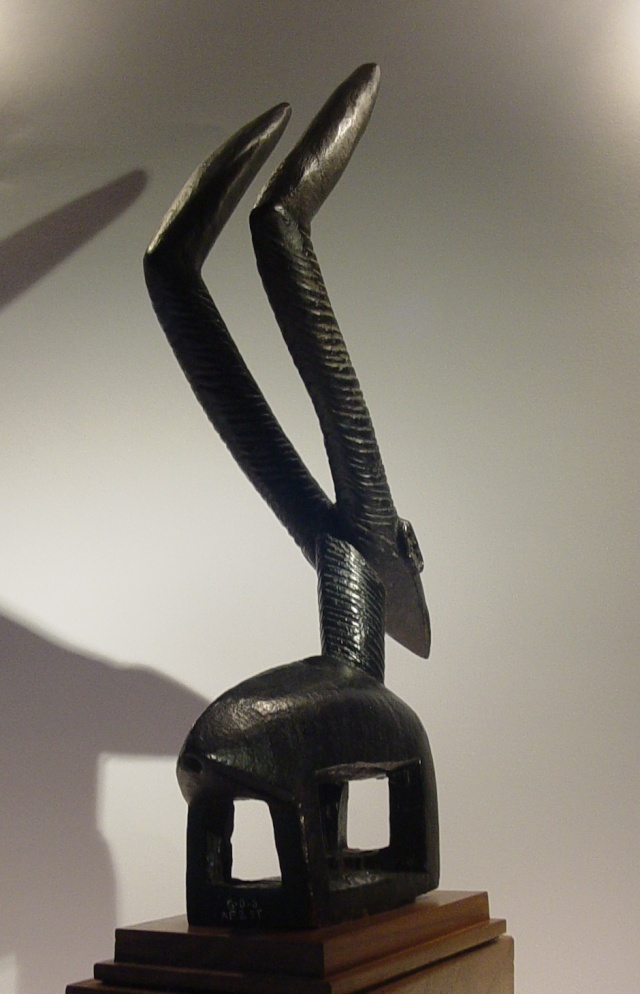
The perfect balance of shapes and volumes, the fantastic and unnatural movement of the horns, the solid body posture of the antelope, make this sculpture a wonderful example of the great artistic creativity and expertise of the executive of Banama people.
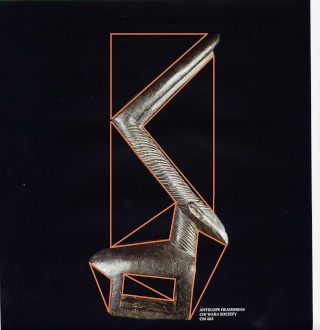
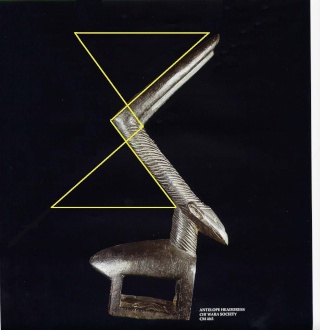

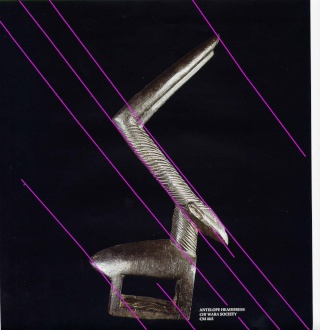
For this reason, because of its intrinsic and expressive beauty and rarity of this specific type, Harrie Heinemans counted this Chi-wara as a favorite among the many that had, and made the logo of his collection, as it appears on the cover of the catalog exposure to the Afrika Museum in Berg en Dal devoted to his collection in 1986.
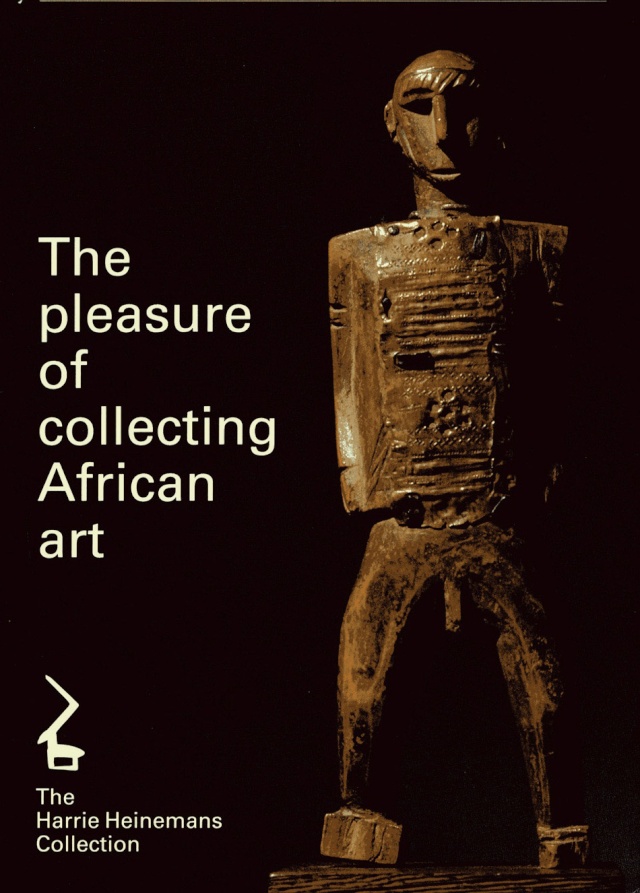
Courtesy, "The pleasure of collecting African art – The Harrie Heinemans Collection"
cover
Bibliography
-Golwater R.J., Bambara Sculpture from the Western Sudan, New York, Museum of Primitive Art, 1960
-Imperato P., The Dance of Tyi wara, African Arts, Los Angeles, Autumn, 1970
McNaugthon P.R., Secret Sculptures of Komo: Art adn Power In Bamana ( (Bambara) Initiation Associations, Institite For the Study of Human Issues, 1979
-Zahan, D., Antilopes du soleil. Arts et rites agraires de l’Afrique noire, A. Schandll, Vienna, 1980
-Brink, J.T., Antelope Headress (Chi Wara), in Susan Vogel, For Spirits and King, NewYork, Met, 1981
-Imperato P., Sogoni koun, African Arts, Los Angeles 14, 2,1981
-McNaughton P.R., The Mande Blacksmiths: knowledge, Power, and Art in West Africa, Indiana University Press, 1988
-Brett-Smith S.C., The Making of Bamana Sculpture: Creativity and Gender, Cambridge University Press, 1994
-Colleyn, J.P., Bamanaya, un art de vivre, Centro Studi Archeologia Africana, Milano, 1998
-Wooten S.R., Antelope Headdresses nd Champion Farmers: Negotiating Meaning and Identity throgh the Mamana Chiwara Complex, African Arts, Los Angeles, 33, 2, Summer 2000, pp.18/33+ 89/90
-Frank, B.E., More Than Objects. Bamana Artistry in Iron, Wood, Clay, Leather, and Cloth, in Bamana.The arts of Existence in Mali, N.Y., 2001
-AA.VV., Bamana. Un art et un savoir-vivre au Mali, Museum Rietberg, Zurich, 2002
-Colleyn, J.P., Ciwara. Chimères africaines, Musée du quai Branly, Paris, 2006
-Colleyn, J.P., Bamana. Vision of Africa, 5 Continents, Milano, 2009
-von Lintig, B.- Dubois, H., Africans Impressions.Tribal Art and Currents of Life, Milano, 5 Continents Ed., 2011
Yale University Art Gallery, No. 0019159-01

Bamana people, Ciwarakun (Chi-wara) or Sogonikun (Sogoni-kun), Headdress Sculpture, Sikasso Region (?), Mali
Legno, pigmento
H. cm 40,5
Ultimo quarto XIX sec.
Collezione privata, Italia
Foto di Pietro Paletti ed Onda Predali
Arti delle Mani Nere All Rights Reserved
Provenienza
-Coll. Harrie Heinemans – Eindhoven
-Coll. May Weber Foundation - Chicago
-Coll. Pierre Loos – Bruxelles
-Coll. Bernard Dulon- Parigi
-Gall. Dalton-Somaré – Milano
Esposizioni
-Afrika Museum, Berg en Dal, 1986
-Parcours des Mondes, Parigi, 2002
-Sculture Africane in collezioni private italiane, Gall. Dalton-Somaré, Milano, 2004
-L’Africa delle Meraviglie. Arti Africane nelle collezioni italiane. Museo Palazzo Ducale, Genova, 30 dicembre 2010-5 giugno 2011.
-Africa. La terra degli spiriti. Museo delle Culture (Mudec), Milano, 27 marzo/ 30 agosto 2015
Pubblicazioni
-African art. The May Weber Foundation. Catalog #1, Chicago,1983, pag.71, b/n.
-Afrika Museum, Berg en Dal, 1986, pag. 36
-"The pleasure of collecting African art – The Harrie Heinemans Collection", Eindhoven, 1986, # 56
-"Primitive Kunst", Archeologie, Bernaerts, Antwerp, 15/XII/1999, Lot. 1257, color illus.
-Tribal, Le magazine de l’art tribal, # 1, Bruxelles, 2002, pag. 34
-Vittorio Carini, "A Hidden Heritage – Sculture africane in collezioni private italiane", Milano, 2004, # 30
-Ivan Bargna, "L’arte in Africa", Jaca Book, Milano, 2008, pag.24, #1 color
-Bargna I, e Parodi da Passano G., "L'Africa delle meraviglie - Arti africane nelle collezioni italiane", Genova, 2010, Silvana Editoriale, Cinisello Balsamo (MI), pag. 51, color
-AA.VV, Africa. Terra degli spiriti, a cura di Gigi Pezzoli e Claudia Zevi, 2015, Milano, 24 Ore Cultura ed. pag. 308, color
Fissata ad un intreccio di vimini, questa scultura era indossata quale copricapo nei riti legati alla coltivazione della terra dal popolo Bamana che aveva in grande considerazione il mondo dell’agricoltura. Conosciute con il nome di Chi-Wara erano talvolta denominate anche Sogoni-kun ( piccola testa di animale).
Come per la Chi-wara del quai Branly, che non fa menzione della regione o dello stile di provenienza ( Inv. N. 73.1964.14.9 ), anche per questa si può soltanto ipotizzare la Regione di Sikasso quale probabile area di origine.

Bamana Chi-wara (antelope) headdress dancers, Near Bamako, Mali, Photograph by Eliot Elisofon, 1971, Image no. E 1 BMB 5 EE 71 (3368),
Courtesy Eliot Elisofon Photographic Archives, National Museum of African Art Smithsonian Institution.
Queste sculture erano realizzate dai "fabbri" che tra i Bamana costituivano un’importante e riconosciuta categoria con elevato status sociale.
La maggior parte degli artisti Bamana appartenevano infatti a una casta denominata collettivamente con il nome di "nyamakalaw", depositaria di una articolazione di significati rituali e cultural/artistici molto complessi e misteriosi.
Le Chi-wara e le Sogoni-kun, fabbricate nell’ambito della "nyamakalaw" veicolano importanti idee estetiche. L’elegante semplicità di una scultura come questa, è definita con il termine "jayan"; altri termini sono il "nyènèn" cioè il design e lo "jago", la decorazione.
Tra i primi collezionisti di Chi-wara sono da annoverarsi André Derain e Fernand Lèger.
Il perfetto equilibrio delle forme e dei volumi, lo slancio senza esitazione delle imponenti corna, a sprezzo delle leggi di natura, la solida postura del corpo dell’antilope, fanno di questa scultura un mirabile esempio della grande creatività artistica e della perizia esecutiva del popolo Bamana.
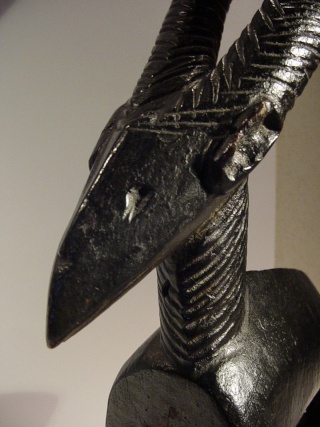
Per questo motivo, la sua intrinseca ed espressiva bellezza unitamente alla rarità, Harrie Heinemans annoverava questa Chi-wara come la preferita tra le tante che possedeva e ne fece il logo della sua collezione, come appare sulla copertina del catalogo dell’esposizione che l’Afrika Museum di Berg en Dal dedicò alla sua collezione nel 1986.

Courtesy "The pleasure of collecting African art – The Harrie Heinemans Collection"
p.36
Bibliografia
-Golwater R.J., “Bambara Sculpture from the Western Sudan”, New York, Museum of Primitive Art, 1960
-Imperato P., “The Dance of Tyi wara”, African Arts, Los Angeles, Autumn, 1970
-McNaugthon P.R., "Secret Sculptures of Komo: Art adn Power In Bamana ( (Bambara) Initiation Associations", Institite For the Study of Human Issues, 1979
-Zahan, D., “Antilopes du soleil. Arts et rites agraires de l’Afrique noire”, A. Schandll, Vienna, 1980
-Brink, J.T., “Antelope Headress ( Chi Wara)”, in Susan Vogel, For Spirits and King, NewYork, Met, 1981
-Imperato P., “Sogoni koun”, African Arts, los Angeles 14, 2,1981
-McNaughton P.R., “The Mande Blacksmiths: knowledge, Power, and Art in West Africa”, Indiana University Press, 1988
-Brett-Smith S.C., "The Making of Bamana Sculpture: Creativity and Gender", Cambridge University Press, 1994
-Colleyn, J.P., ”Bamanaya, un art de vivre”, Centro Studi Archeologia Africana, Milano, 1998
-Wooten S.R., "Antelope Headdresses nd Champion Farmers: Negotiating Meaning and Identity throgh the Mamana Chiwara Complex", African Arts, Los Angeles, 33, 2, Summer 2000, pp.18/33+ 89/90
-Frank, B.E., "More Than Objects. Bamana Artistry in Iron, Wood, Clay, Leather, and Cloth", in "Bamana.The arts of Existence in Mali", N.Y., 2001
-AA.VV., “Bamana. Un art et un savoir-vivre au Mali”, Museum Rietberg, Zurich, 2002
-Colleyn, J.P., “Ciwara. Chimères africaines”, Musée du quai Branly, Paris, 2006
-Colleyn, J.P., “Bamana. Vision of Africa”, 5 Continents, Milano, 2009
-von Lintig, B.- Dubois, H.,”Africans Impressions.Tribal Art and Currents of Life”, Milano, 5 Continents Ed., 2011
Yale University Art Gallery, No. 0019159-01

Dalton Somaré Gallery. Parcours des Mondes, Paris, 2002
 Argomenti simili
Argomenti simili» Ekoi/ Ejagham people, Ekpe society, Skin-covered wood mask headdress, Nigeria, Cross River Region
» Dogon people, Ritual Panel, Tintam sub-style, Mali
» Songye people, N'kisi figure, Region of Eki or Beneki, Congo
» Kongo people, Ritual Whistle, Lower Congo Region
» Vili people, Nkisi Figure, Lower Congo Region
» Dogon people, Ritual Panel, Tintam sub-style, Mali
» Songye people, N'kisi figure, Region of Eki or Beneki, Congo
» Kongo people, Ritual Whistle, Lower Congo Region
» Vili people, Nkisi Figure, Lower Congo Region
Pagina 1 di 1
Permessi in questa sezione del forum:
Non puoi rispondere agli argomenti in questo forum.
 Indice
Indice